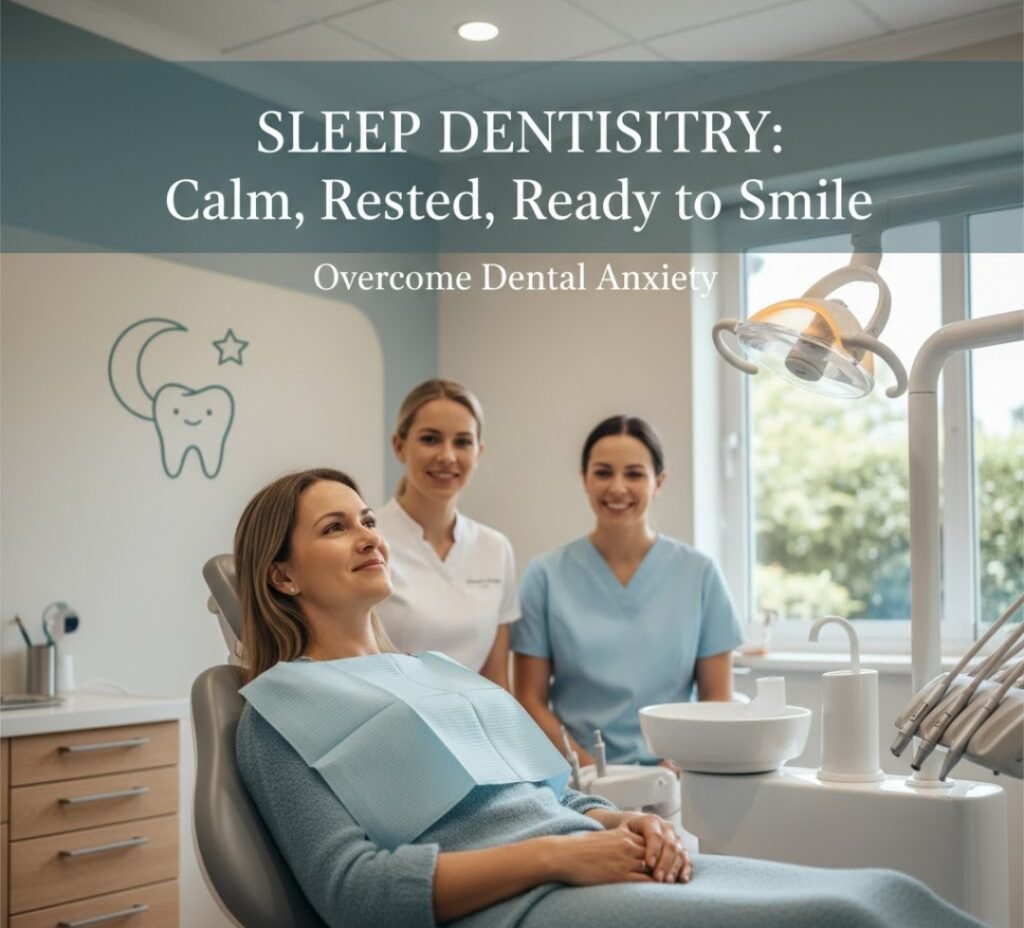For many people, a trip to the dentist brings more than just concern about oral health—it brings fear, tension, and worry. Dental anxiety is one of the most common reasons patients postpone or avoid appointments altogether, often allowing simple issues to become complex dental problems. Fortunately, modern dentistry has developed safe and effective solutions designed to ease these fears. One of the most transformative approaches is sleep dentistry, a method that helps patients experience dental care in a calm, restful state, free from the distress of anxiety or discomfort.
Sleep dentistry—also known as sedation dentistry—goes beyond traditional pain relief. It’s about creating a sense of deep relaxation that allows patients to receive the care they need without fear or unease. Whether it’s a routine cleaning or an advanced restorative procedure, this approach makes it possible to maintain oral health comfortably and confidently. By providing accessible comfort for every patient with the help of sleep dentistry, dental professionals can transform the experience of visiting the dentist into one of calm and trust.
Understanding Dental Anxiety
Dental anxiety can stem from different sources: a past traumatic experience, fear of needles or drills, embarrassment about oral health, or a general sense of loss of control. For some, even the thought of sitting in a dental chair can cause increased heart rate or nausea. These reactions are real and valid—yet they often lead to a harmful cycle of avoidance. The longer patients delay care, the more likely dental problems are to progress, which in turn leads to more complex treatments that heighten anxiety further.
Recognizing this, dental professionals have sought solutions that address not only physical comfort but also emotional well-being. Sleep dentistry offers a bridge between necessary dental care and the patient’s need for peace of mind.
What Is Sleep Dentistry?
Sleep dentistry uses carefully administered sedatives to help patients relax during dental procedures. Contrary to what the name may suggest, patients aren’t always fully “asleep”—the level of sedation can range from mild relaxation to deep sleep, depending on the treatment and patient needs.
There are several types of sedation used in modern dental clinics:
- Nitrous oxide (laughing gas): A mild form of sedation inhaled through a mask that helps reduce tension while keeping the patient awake and responsive.
- Oral sedation: Medication taken before the appointment that induces a moderate level of calmness and drowsiness, allowing for a stress-free experience.
- IV sedation: Delivered intravenously, this form provides a deeper level of relaxation. Patients often have little to no memory of the procedure afterward.
- General anesthesia: Used in select cases for major or complex procedures, this ensures complete unconsciousness throughout treatment.
With these tailored options, sleep dentistry ensures that each patient’s experience is customised according to their comfort level and procedure requirements.
The Emotional and Physical Benefits
The most obvious benefit of sleep dentistry is reduced anxiety, but its advantages go much deeper. Many patients find that they can undergo multiple treatments in a single visit, reducing the number of appointments needed. This not only saves time but also minimizes the buildup of nervous anticipation between sessions.
Moreover, sedation helps prevent involuntary reactions such as gagging or flinching, which can make dental work difficult or uncomfortable. It also lowers muscle tension, allowing dentists to work more efficiently while the patient remains relaxed. For individuals with sensitive teeth or low pain thresholds, the experience becomes not only tolerable but genuinely pleasant.
Emotionally, the impact can be profound. Patients who once avoided dental care due to anxiety often report a complete change in perspective after experiencing sedation. The memory of calm and comfort replaces the fear associated with dental visits, leading to improved long-term oral health habits.
Who Can Benefit from Sleep Dentistry
Sleep dentistry isn’t limited to patients with severe dental phobia. It’s also beneficial for:
- Individuals with a low pain threshold or strong gag reflex.
- Those needing lengthy or complex procedures.
- Patients who struggle to sit still for extended periods.
- Children or adults with special needs.
- Anyone who simply prefers a more relaxed dental experience.
Dentists conduct thorough consultations before recommending sedation to ensure safety and suitability. Medical history, anxiety levels, and treatment plans are reviewed to determine the most appropriate approach.
A Calmer Future for Dental Care
Sleep dentistry represents a significant step forward in patient-centred care. It empowers individuals to take control of their oral health without fear standing in the way. With compassionate guidance and modern sedation techniques, dental professionals can help patients finally feel calm, rested, and ready to smile again.
For those who struggle with anxiety during dental visits, understanding the various methods of managing dental anxiety can be the first step toward restoring confidence in oral care—proving that dentistry today is as much about emotional comfort as it is about healthy, beautiful smiles.
Disclaimer: This article is for general information only. It is not medical or dental advice. Always talk to a qualified dentist or doctor before making any decisions about your dental care or sedation options. Every person is different, and only a licensed professional can tell you what is safe and right for you.
Explore More
- Dentist Check Up for Seniors: A Warm, Simple Guide
- Dentist in Brentwood: Your Guide to Healthy Smiles with Talbot Dental
Experienced SEO Specialist and Web Developer with a strong focus on off-page SEO and guest posting. With 3 years of proven expertise, I help businesses improve their search rankings and build sustainable online presence.
